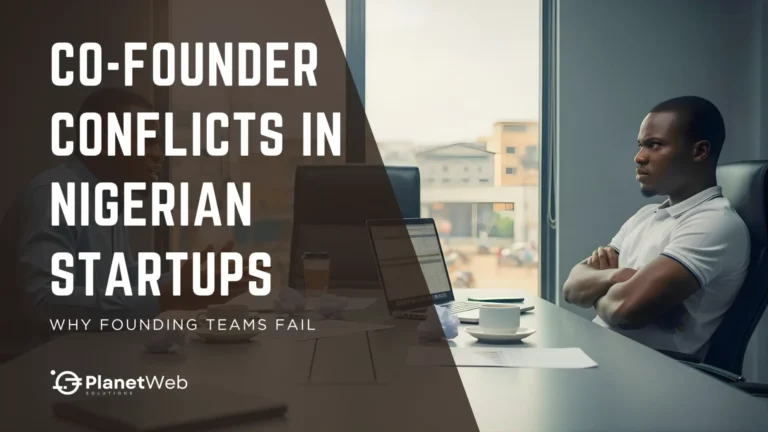Enterprise Document Management in Nigeria: Moving Beyond File Storage to Real Business Impact
In offices across Lagos, Abuja, and other commercial hubs, teams routinely lose time, create risks, and miss opportunities due to how information is managed.
A signed contract goes missing before a follow-up with the client. An HR file can’t be located during an internal review. Finance prints the same invoice three times because nobody knows which version is the current one. These problems are common, but they’re not inevitable. They occur when there’s no structure in place for how documents are created, shared, stored, and eventually retired.
For Nigerian businesses operating in an increasingly regulated, digitally connected, and competitive environment, relying on paper or unstructured digital files has become unsustainable. What’s needed is a governed, secure, and scalable approach to managing information: an Enterprise Document Management System (EDMS).
This guide is based on practical experience helping Nigerian organizations transition from document chaos to controlled workflows without disrupting their operations. It builds on our work implementing SharePoint-based EDMS solutions and reflects the requirements of the Nigeria Data Protection Act (NDPA) 2023.
If you’re new to EDMS, start with our foundational piece: What is Enterprise Document Management in Nigeria?
The Operational Reality of Document Chaos
Most businesses don’t see the real cost of poor document handling until they trace a single file’s journey.
Take a typical client contract in a professional services firm:
- Drafted in Word and saved to one partner’s desktop
- Emailed to a team member for edits
- Printed for a meeting, then left in a conference room
- Scanned back in after signing, but saved under a slightly different name
- Six months later, during a dispute, nobody can confirm which version was actually signed
This cycle repeats across departments. Files live in email inboxes, WhatsApp chats, personal laptops, USB drives, and filing cabinets. The result? Delayed decisions, duplicated effort, compliance exposure, and daily frustration.
You see the same pattern everywhere:
Healthcare: Patient records in unsecured spreadsheets or paper files that get misfiled
Manufacturing: Compliance certificates in three-ring binders with no tracking of expiry dates
Finance: KYC documents scattered across shared drives, email attachments, and physical folders
Legal: Multiple “final” versions of the same contract floating around with no way to know which one was actually executed
The cost is evident in ways that most businesses don’t measure. An associate spends 20 minutes searching for a file that should take only 30 seconds to locate. A manager asks for the same report three times because the first two versions were lost. An audit becomes stressful because nobody knows where the documentation actually is.
An EDMS doesn’t just digitize paper. It restructures how information flows, with visibility, accountability, and automation built in from the start.
What an EDMS Actually Delivers
An EDMS gets confused with cloud storage. But there’s a fundamental difference: cloud storage is a digital filing cabinet. An EDMS is a governed system with rules, workflows, and controls.
1. Structured Classification
Instead of generic folders like “Client Files 2024,” documents are tagged with metadata: Client Name, Document Type, Department, Date, Project ID, and Status. This makes every file instantly searchable and reportable.
Example: Instead of browsing through folders to find all contracts with a specific vendor, you search once and get every relevant document, regardless of where it was originally saved.
2. Role-Based Access Control
You define who can view, edit, or share a document based on document type and business function, not just folders:
- Employees see only their own HR records
- Legal associates can edit contracts but not delete them
- External auditors get time-limited, read-only access to specific document sets
- Department heads access everything in their area, but nothing outside it
This supports the principle of least privilege, which is central to data protection frameworks, such as the NDPA 2023.
3. Full Audit Trails
Every action is logged automatically, including who opened a file, when, from which device, and what they did with it. This creates a verifiable record of data handling that becomes critical during regulatory reviews or internal investigations.
When someone asks, “Who had access to this document?” you have an answer in seconds, not speculation.
4. Workflow Automation
Routine processes that normally require manual tracking get automated. Here’s a real example from a client we work with:
Invoice Approval Flow:
- Finance uploads an invoice, and the system automatically tags the vendor and amount
- A notification goes to the department head for approval
- If approved, the invoice routes to the CFO; if rejected, it returns with a comment explaining why
- After final approval, the invoice gets locked and forwarded to payment processing
- The entire audit trail is preserved automatically
This eliminates the need for manual chasing (“Did you approve that invoice yet?”) and closes the gaps where things used to fall through.
5. Lifecycle Management
Documents don’t stay in the system forever. You define retention rules based on business and regulatory requirements, and the system automatically archives or securely deletes documents when appropriate. This reduces clutter and legal risk.
For more on how automation and AI support this, see: AI in Document Management for Nigerian Businesses.
NDPA 2023: Why Document Governance Actually Matters Now
The Nigeria Data Protection Act 2023 changed the compliance landscape for every organization handling personal data. The key principles directly impact document management:
Accountability: You must demonstrate how you protect data, not just claim you do
Purpose Limitation: Data collected for one reason shouldn’t be reused for another without fresh consent
Storage Limitation: Data shouldn’t be kept longer than necessary
Confidentiality: Access must be restricted to authorized personnel only
Paper files and unstructured digital folders can’t meet these requirements. They offer no logs, no version history, no way to prove you deleted data when required, and no reliable mechanism to show compliance.
An EDMS supports compliance by design:
- Access logs show exactly who viewed a file and when
- Metadata can link documents to specific consent records
- Retention policies enforce timely deletion automatically
- Encryption and secure sharing reduce the risk of breaches
- Role-based access ensures people only see what they need to
During an NDPC review, this capability transforms the experience. Instead of scrambling to piece together evidence of how you handle data, you generate reports showing exactly what happened, when, and why. For a broader view of how NDPA 2023 reshapes data obligations, see our guide: Navigating the Nigeria Data Protection Act 2023.
Sector-Specific Challenges and EDMS Solutions
Different industries face different document management problems. Here’s how EDMS addresses them:
Legal Firms
Challenge: Version control nightmares, client confidentiality requirements, and matter-based billing
Solution: Automatic versioning that tracks every change, matter-centric workspaces that keep all related documents together, redaction tools for sensitive information, and integration with time-tracking systems
We cover legal-specific workflows in more detail here: Document Management for Nigerian Law Firms.
Healthcare Providers
Challenge: Protecting patient privacy while ensuring clinical staff have access when needed
Solution: Tiered access where doctors see clinical records and administrative staff see only billing information, audit trails for every record view, consent documentation linked directly to patient files
Financial Services
Challenge: KYC and AML compliance, secure client onboarding, and constant audit readiness
Solution: Digitized KYC packets with e-signature capability, secure client portals for document submission, integration with accounting and core banking systems, automated alerts when documents need renewal
Manufacturing & Logistics
Challenge: Managing certificates, supplier contracts, and inspection reports that all have expiry dates
Solution: Automatic expiry alerts, vendor self-service portals for submitting documents, centralized search by equipment serial number or shipment ID, batch operations for certificate renewals
NGOs & Education
Challenge: Donor reporting requirements, accreditation audits, and file sharing across multiple sites
Solution: Tag documents by project, funder, or campus location, auto-generate compliance packs for donor reports, and role-based access that respects campus boundaries while enabling central oversight
The Hidden Costs of Not Having an EDMS
Before we get into implementation, let’s talk about what staying with the current system actually costs. Most organizations underestimate this because the costs are distributed and invisible.
Time Lost to Search: If your team spends an average of 10 minutes per day searching for documents (a conservative estimate), that’s roughly 40 hours per year per employee. In a 50-person company, that’s 2,000 hours annually—the equivalent of one full-time employee doing nothing but looking for files.
Compliance Risk: Under NDPA 2023, the penalty for serious violations can reach 2% of annual gross revenue or N10 million, whichever is higher. A single data breach caused by poor document security can trigger this.
Missed Opportunities: How many times has your team delayed a proposal because you couldn’t find the previous one to use as a template? How often have you lost track of client interactions because the notes were in someone’s email?
Version Confusion: When someone works from an outdated contract or uses old pricing information, the cost shows up later—in disputes, pricing errors, or compliance failures.
Storage Costs: Physical storage is expensive. File cabinets, storage rooms, off-site warehouses, not to mention the staff time required to file, retrieve, and manage paper.
A Practical Implementation Roadmap
Success with EDMS depends more on people and process than on technology. Here’s how to approach it:
Phase 1: Assessment (2–3 Weeks)
Start by understanding what you actually have and where the pain points are:
- Identify three to five high-impact document types (contracts, HR files, invoices, compliance certificates)
- Map current workflows: who creates documents, who reviews them, who approves them, and where they end up
- Define user roles and access requirements based on actual job functions
- Document your biggest frustrations (this becomes your measure of success later)
Phase 2: Pilot (4–6 Weeks)
Don’t try to roll out across the entire organization at once. Pick one department, usually HR or Finance:
- Configure metadata schemes, retention rules, and approval workflows
- Train “Document Champions”—people who understand the system and can help their colleagues
- Start with new documents only (don’t migrate historical files yet)
- Collect feedback weekly and adjust as needed
The pilot should remove friction, not add it. If people complain that the system is slower than email, something’s wrong.
Phase 3: Scale & Embed (Ongoing)
Once the pilot works smoothly:
- Expand to other teams using lessons learned
- Migrate active legacy files only (not everything)
- Conduct monthly check-ins to refine workflows and troubleshoot issues
- Make the EDMS the default: new documents must be created in the system
For guidance on efficiently digitizing historical records, see our guide on document conversion in Nigeria and digitizing business records.
Adoption succeeds when the system makes work easier. It fails when it adds steps without a clear benefit.
Phase 4: Optimization
After three to six months:
- Review access permissions and remove unnecessary rights
- Add automation to eliminate remaining manual steps
- Train new staff as part of onboarding
- Update retention policies based on operational experience
Choosing the Right Platform for Nigeria
Microsoft SharePoint (Enterprise)
Best for organizations already using Microsoft 365. It has strong workflow capabilities and integrates naturally with Word, Excel, and Outlook. However, it requires proper governance configuration to be truly compliant—SharePoint out of the box is just sophisticated file storage.
We have extensive experience with Microsoft 365 implementation in Nigeria, as well as SharePoint NDPA compliance.
Learn more about SharePoint document management capabilities.
Zoho WorkDrive (Enterprise Plan)
More cost-effective than SharePoint, with built-in audit logs and retention rules. The interface is intuitive for non-technical users. This is ideal for SMEs that want structure without the need for extensive configuration or IT overhead.
Read more: Zoho WorkDrive for Nigerian SMEs.
Explore Zoho WorkDrive features for team collaboration.
Open-Source Options
Platforms like Alfresco or Nuxeo offer complete control, but they require in-house technical expertise. Better suited for organizations with dedicated IT teams and strict data residency requirements.
Consumer tools like Google Drive or Dropbox are not suitable as primary EDMS platforms. They lack the audit trails, retention controls, and granular permissions that regulated Nigerian organizations are now required to have under the NDPA 2023.
For a detailed comparison of platforms suited to Nigerian business needs, see our guide: Best EDMS for Nigerian Businesses.
Building a Governance Framework
Technology alone won’t fix disorganization. You also need:
- A Document Owner in each department who is responsible for structure and compliance
- Clear naming and tagging conventions that everyone follows
- A published retention schedule based on business and regulatory requirements
- A policy that new documents live only in the EDMS (not on personal drives or email)
- Quarterly access reviews to keep permissions accurate
This isn’t bureaucracy for its own sake. It’s operational discipline that enables speed, security, and trust.
Common Pitfalls to Avoid
Trying to digitize everything at once: Start with new and active documents. Backfilling historical records can come later.
Skipping user training: If people don’t understand why the system helps them, they’ll find workarounds.
Over-complicating metadata: Don’t create 15 tags when 5 will do. Keep it simple enough that people will actually use it.
Forgetting about mobile access: Your team works from phones and tablets. Make sure they can access documents securely from any device.
Not planning for departing employees: Have a process for immediately revoking access when someone leaves. This is both a security and compliance requirement.
Frequently Asked Questions
Why Work with PlanetWeb
We’ve helped Nigerian organizations implement EDMS solutions that accurately reflect how they actually operate, rather than how theory suggests they should.
Our approach starts with your workflows, not software features. We design NDPA-aligned structures from day one and focus on practical training that people can apply immediately. Most importantly, we provide local, responsive support during Nigerian business hours.
We don’t just deploy tools. We help you establish a sustainable information management practice, enabling your team to spend less time searching for files and more time delivering value.
See how we helped a Lagos professional services firm reduce document retrieval time, eliminate version confusion, and improve NDPA readiness: Enterprise Document Management System Implementation Case Study.
Learn more about our Document Management Solutions in Nigeria.
Related Resources
What is Enterprise Document Management in Nigeria? – New to EDMS? Start here for a foundational overview
Best EDMS for Nigerian Businesses – Compare platforms and find the right fit for your organization
Document Management Implementation in Nigeria – Step-by-step guide to rolling out an EDMS
Document Management for Nigerian Law Firms – Industry-specific workflows for legal practices
Enterprise EDMS Implementation Case Study – See how a Lagos firm transformed their document management
Ready to Get Started?
If your team is experiencing document delays, compliance uncertainty, or daily operational friction, let’s discuss what’s actually possible.
We offer a free EDMS consultation to understand your current challenges, identify your highest-impact starting points, and recommend a realistic path forward.
Book Your Free EDMS Consultation
🗓️ Last updated: November, 2025






